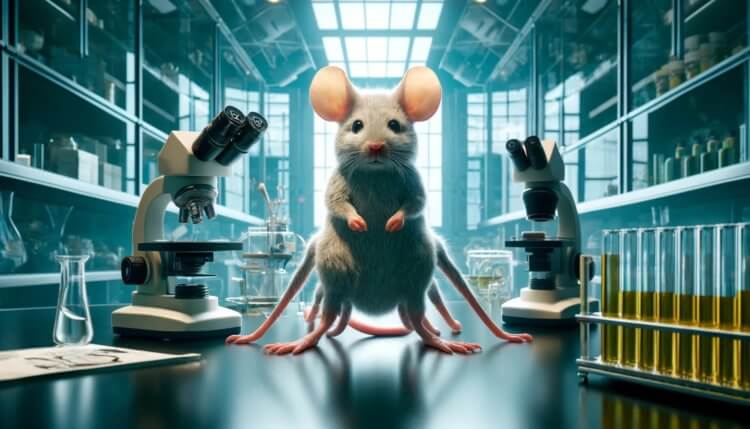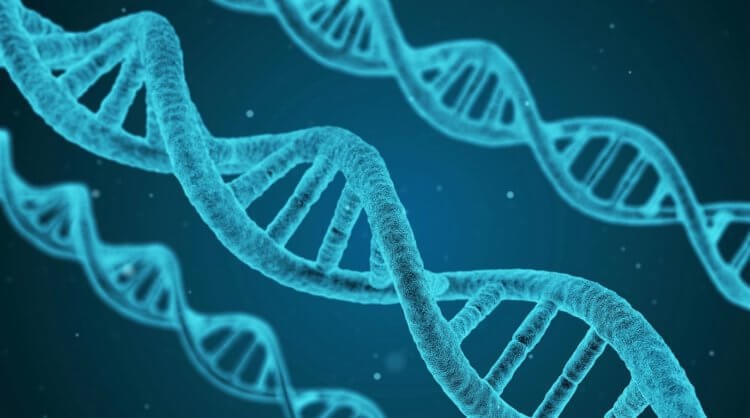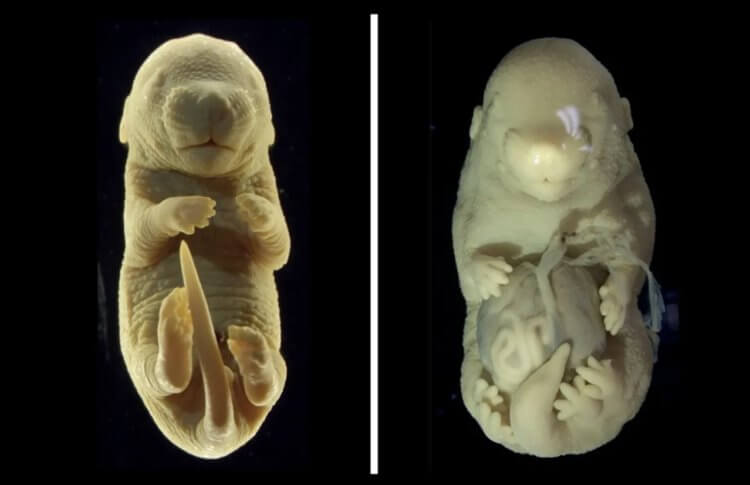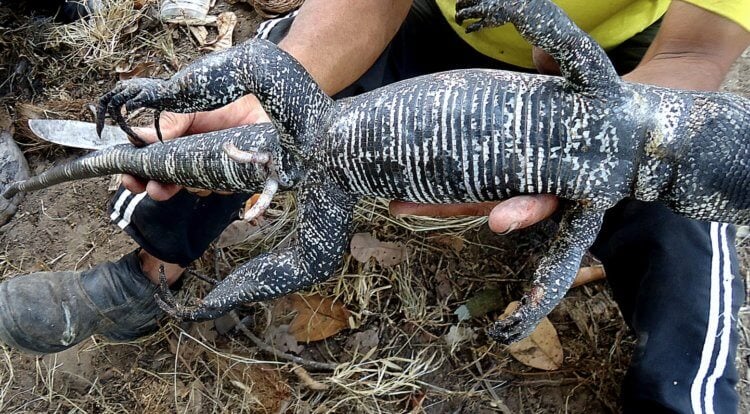Many scientific publications are now discussing a study in which scientists managed to create a mouse embryo that has additional limbs instead of genitals. The news sounds like something out of science fiction or even a horror movie, but it is reality – in laboratory conditions, biologists have created a real mutant. It goes without saying that they did not allow the further development of this organism, because it would hardly have been able to adapt to life without genitals and the presence of extra legs. After reading this news, a fair question arises: why did scientists create such a mutant? The answer is simple: in fact, they did not have such a goal.

In the course of scientific work, scientists accidentally created a mutant. Image: DALLE-3 neural network
Gene editing in animals
The authors of the scientific publication IFL Science spoke about the creation of a mutant mouse. During their scientific work, biologist Moisés Mallo and his colleagues studied the Tgfbr1 protein, which is very important for the embryonic development of all mammals. The experiment was carried out on embryos of several laboratory mice.
Embryonic developmentis the process by which a young body develops from the moment of conception to birth. During this period, which takes several months depending on the species, external and internal organs are formed.

Using gene editing tools, scientists turned off the production of the Tgfbr1 protein. Image: research2reality.com
As part of the study, scientists tried to disable the gene that is responsible for the production of the Tgfbr1 protein. Having performed this action, they wanted to find out how it would affect the body's spinal cord. But the result of this action was extremely unexpected.
Read also:What mutations are there and how they differ
Scientists created a mutant in the laboratory
Instead of changes in the spinal cord, scientists noticed that one of the embryos did not begin to develop genitals. Instead, they saw two additional limbs.
During embryonic development, the body of animals is formed in stages, starting from the head and ending with the tail. At the end of the first stage there is a transition from the head to the body, and at the second there is a transition from the body to the tail. The protein the researchers studied, Tgfbr1, was best known for its important role in the developmental switch from trunk to tail. Scientists also suspected that it is responsible for the formation of the hind limbs and genitals.

A normal mouse embryo (left) and a six-legged embryo without genitals (right). Image: iflscience.com
As a result of the experiment, scientists found clear confirmation of this. By turning off the gene responsible for the production of Tgfbr1, they interfered with the proper development of the body so much that they created a mutant. After this scientific discovery, scientists want to find out how this protein affects other body systems.
Scientists also want to find out whether the Tgfbr1 protein affects the development of a double penis – hemipenis – in lizards and snakes. The males of these animals do have two reproductive organs, but only one of them is used during sex. Typically, the hemipenis is located in the cloaca, the slightly expanded terminal part of the hindgut. During mating, the genitals come out and then become invisible again.

Hemipenis of a huge lizard. Image: bogatyr.club
An unexpected scientific discovery has revealed new details about the development of mammals to scientists. Perhaps, thanks to the results of this study, researchers will be able to develop new technologies for treating genetic diseases. At the moment, it is difficult to name the potential of the discovery, but it definitely exists.
Read also:How, due to a rare gene mutation, a woman was accused of serial murders and then pardoned
A dog with six legs
It is logical to assume that organisms with multiple limbs are born due to a mutation that is responsible for the production of the Tgfbr1 protein. One of the most famous animals with this mutation is a dog named Ariel – the nickname was given to her in honor of the fairy-tale little mermaid. Due to the mutation, the dog grew two extra limbs that fused together. She was also found to have second genital organs.

A mutated dog Ariel with extra limbs. Image: iflscience.com
In 2024, the dog underwent surgery to remove extra limbs. It was successful, and the very next day Ariel ate food and drank water with appetite. However, she still needs a long recovery because one of her healthy legs is very weak – she needs a good workout.
To stay updated with new scientific discoveries, subscribe to our Zen and Telegram channels. This way you won't miss anything!
When it comes to mutations, people immediately think of something bad. But sometimes genetic changes give animals and people very beautiful external features. If you want to see this, read our article “Genetic mutations that make people beautiful.”